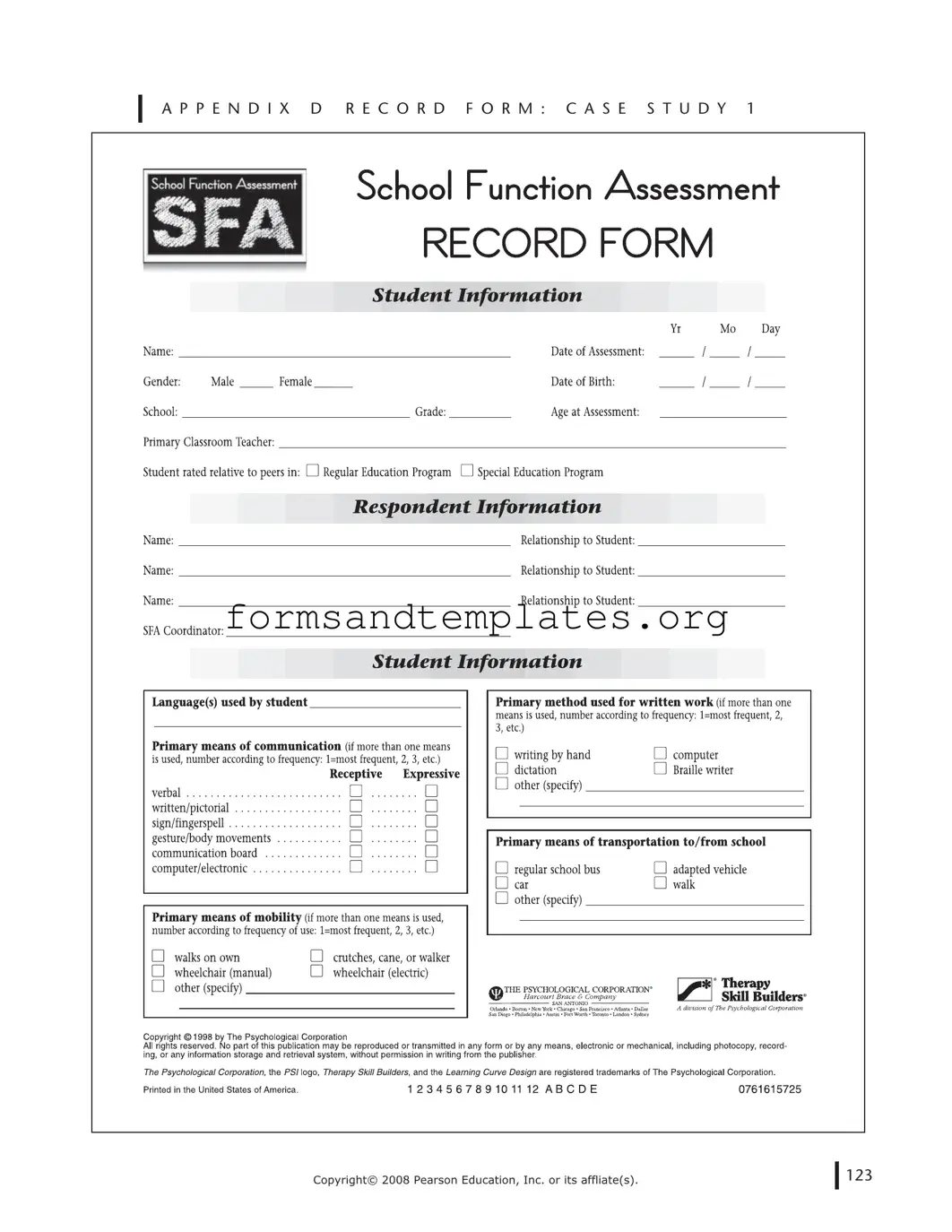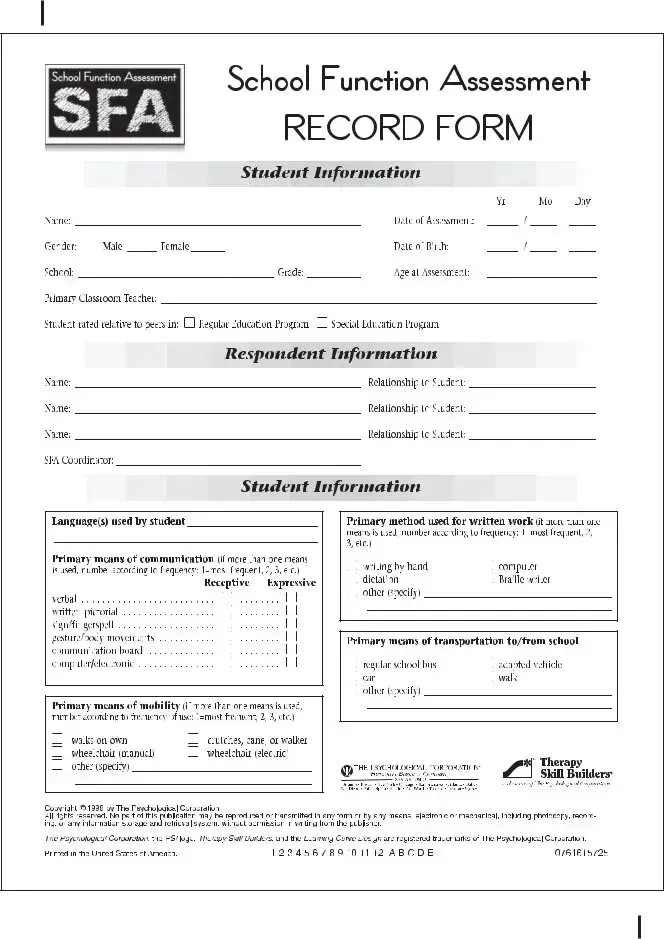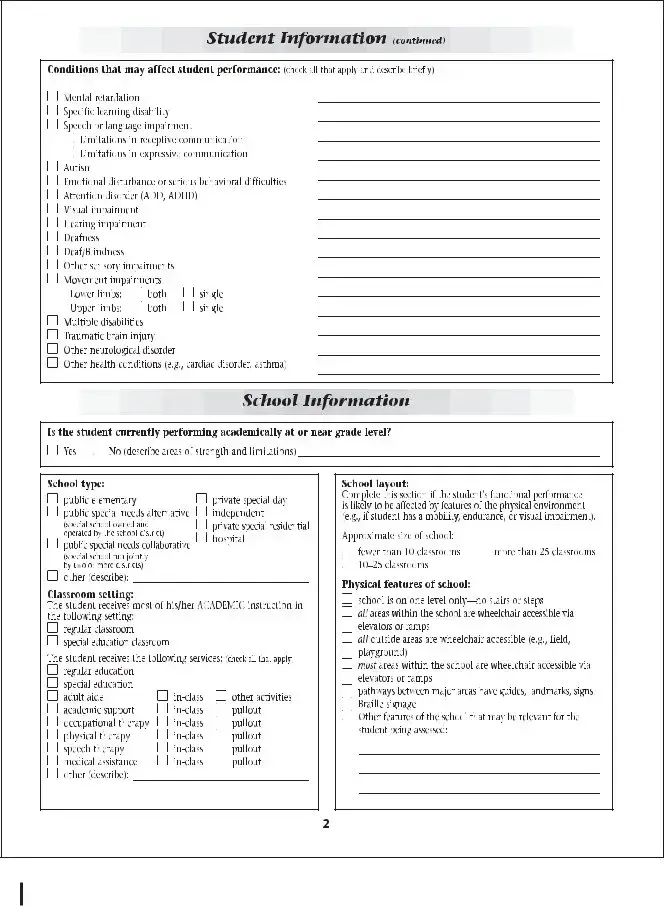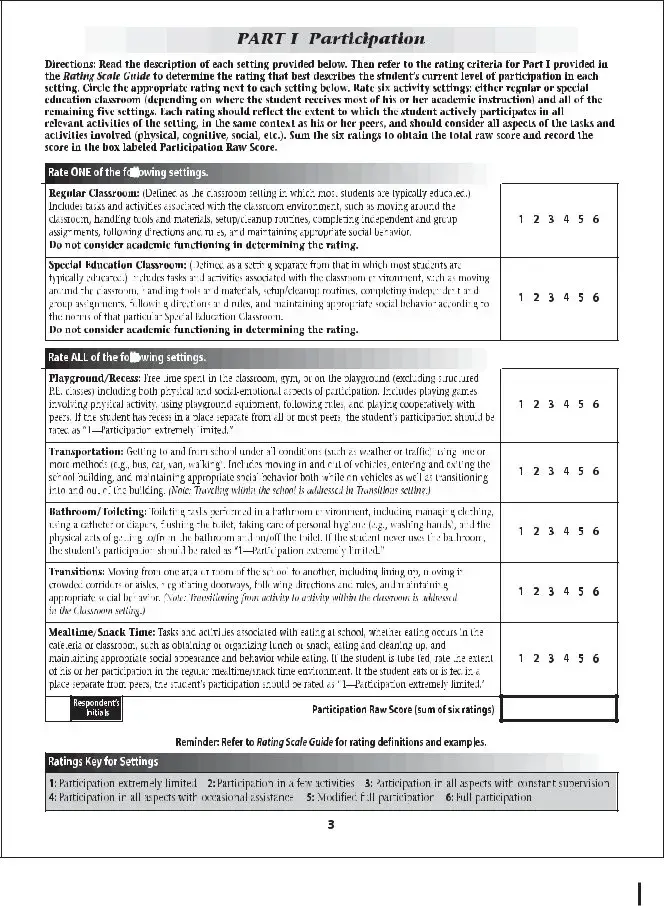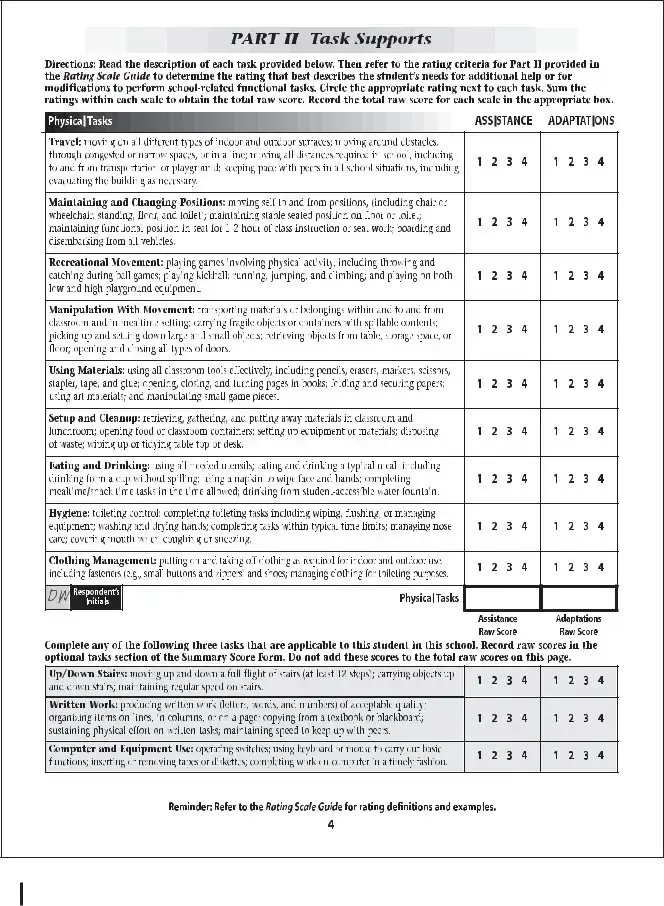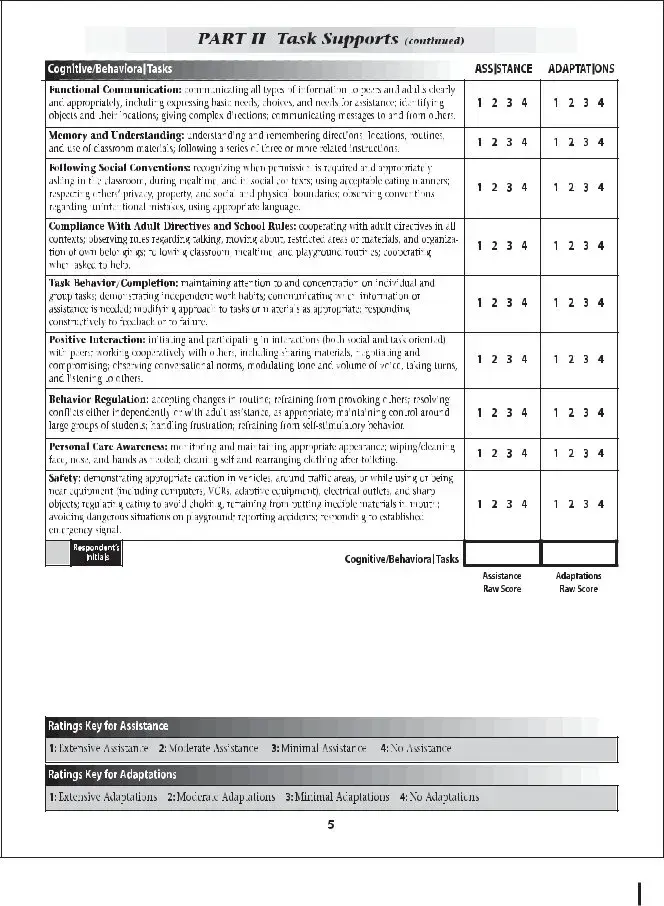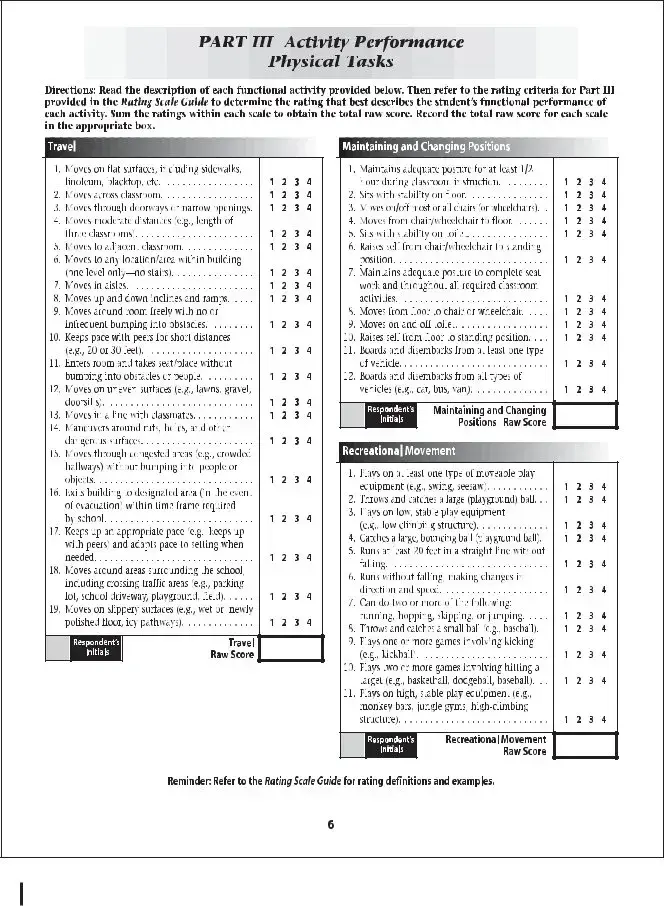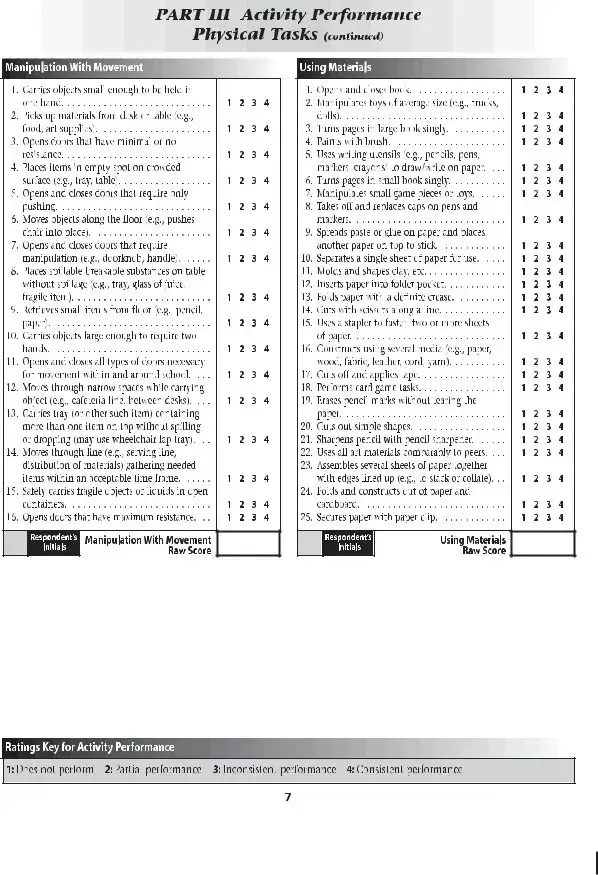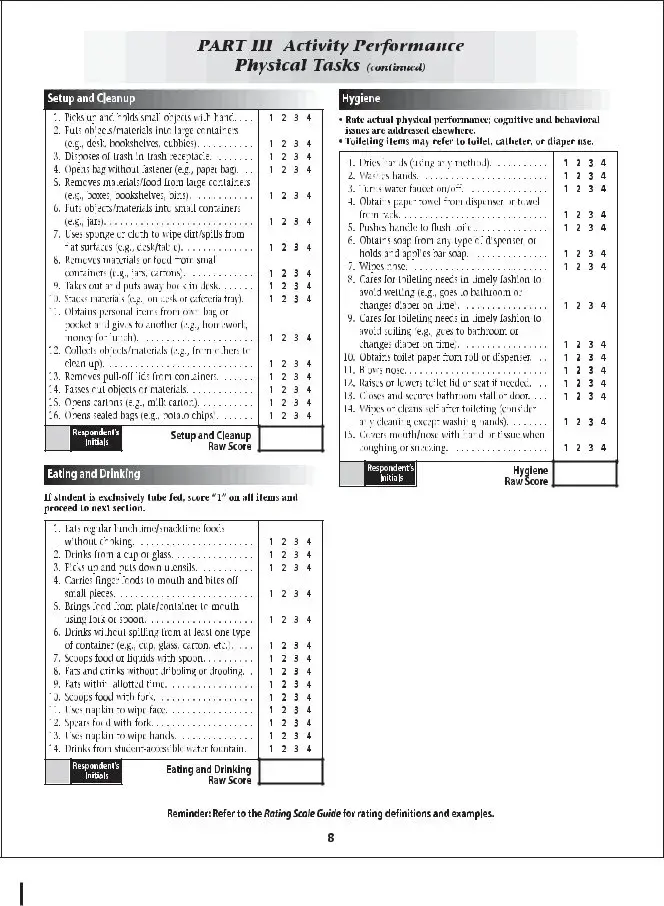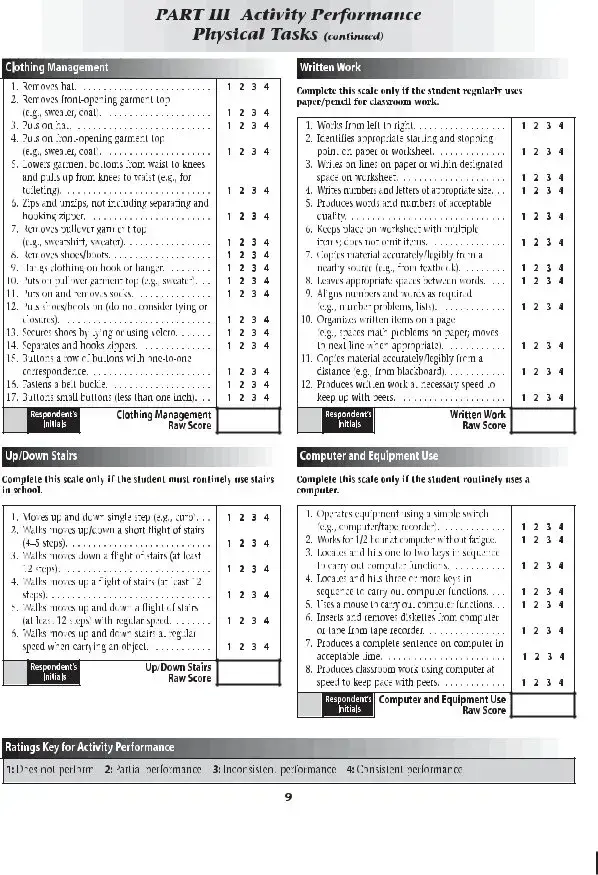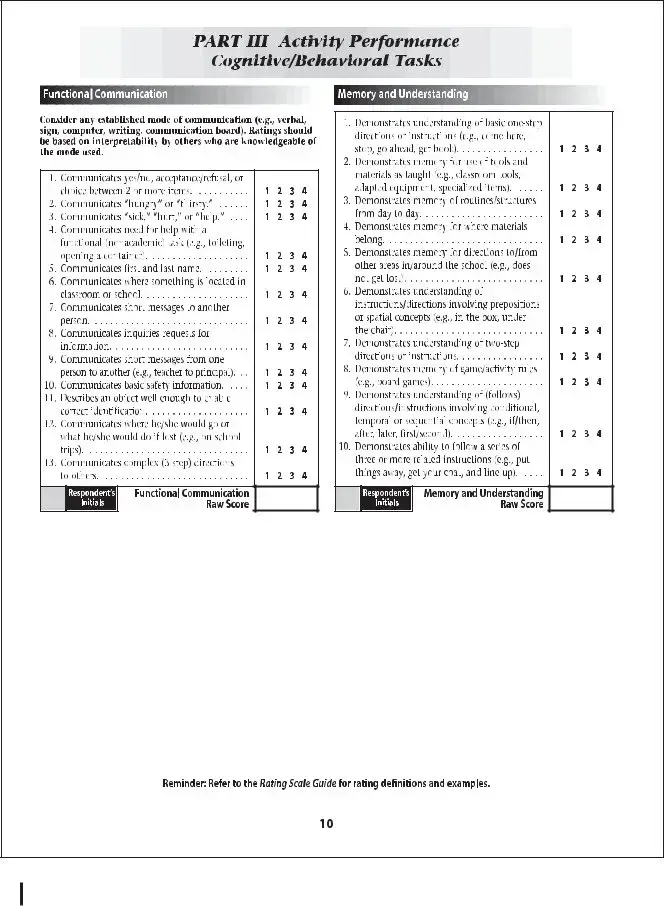The School Function Assessment (SFA) form serves as a critical tool for evaluating students' functional performance in a school setting. It focuses on how well students engage in various school-related tasks, providing insights into their ability to participate in daily activities. The SFA assesses three primary areas: participation in school settings, task performance, and the support needed for successful engagement. By capturing information from teachers and caregivers, this form highlights both strengths and challenges faced by students, allowing for tailored interventions. The data collected can inform individualized education plans (IEPs) and support services, ensuring that every child receives the appropriate resources to thrive academically and socially. Furthermore, the SFA is instrumental in fostering collaboration among educators, therapists, and families, promoting a comprehensive approach to student development.
